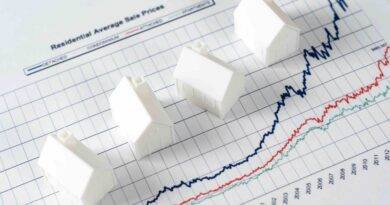House Price Appreciation May Flip the Rent Versus Own Dynamic Again
It’s slightly more financially prudent to rent versus own, but the dynamic is trending toward owning once more, thanks to the benefit of equity accumulation, says Chief Economist Mark Fleming
SANTA ANA, Calif., – First American Data & Analytics, a leading national provider of property-centric information, risk management and valuation solutions and a division of First American Financial Corporation (NYSE: FAF), released the August 2023 First American Data & Analytics’ Real House Price Index (RHPI). The RHPI measures the price changes of single-family properties throughout the U.S. adjusted for the impact of income and interest rate changes on consumer house-buying power over time at national, state and metropolitan area levels. Because the RHPI adjusts for house-buying power, it also serves as a measure of housing affordability.
Chief Economist Analysis: RHPI Jumps 25 Percent Year Over Year
“In August 2023, the RHPI jumped up by nearly 25 percent on an annual basis, dragging housing affordability to the lowest point in over three decades. Two factors drove the sharp annual decline in affordability – a 5.4 percent annual increase in nominal house prices, according to our First American Data & Analytics House Price Index, and a 1.9 percentage point increase in the 30-year, fixed mortgage rate compared with one year ago,” said Mark Fleming, chief economist at First American. “For home buyers, holding prices constant, the only way to mitigate the loss of affordability caused by higher mortgage rates is with an equivalent, if not greater, increase in household income. Even though household income increased 2.9 percent since August 2022 and boosted consumer house-buying power, it was not enough to offset the affordability loss from higher rates and rising nominal prices.
“House prices reached a new peak in August. For those trying to buy a home, house price appreciation can be intimidating and makes the purchase more expensive, all else held equal. However, once the home is purchased, appreciation helps build equity in the home, and becomes a benefit rather than a cost,” said Fleming. “As potential first-time home buyers consider homeownership in today’s market, they should carefully weigh the costs of owning a home against the cost of renting.”
Gap Between Cost to Own and Cost to Rent Narrows in Third Quarter
“The cost of renting is simply the amount of rent paid every month. The monthly cost of owning a home includes taxes, repairs, homeowner’s insurance and the monthly mortgage principal and interest payments. To calculate the monthly cost of homeownership, our analysis assumes the potential buyer is taking out a 30-year, fixed-rate mortgage with a 5 percent down payment on a home at the median sale price,” said Fleming. “Finally, our monthly cost-to-own analysis factors in the potential benefit of equity accumulation through house price appreciation as well as the potential cost in terms of lost equity from declining house prices.
“If you simply compare the cost of renting versus the cost of owning without accounting for the benefit or loss from house price changes, it has always been cheaper to rent versus own,” said Fleming. “In fact, nationally, the gap between the cost of owning versus the cost of renting was the widest in over 20 years of data in the third quarter of 2023, due to higher mortgage rates pushing up the monthly cost of homeownership.
“However, once accounting for house price changes, a different story emerges. It was more financially prudent to own versus rent from 2000 until 2005 as house price appreciation was strong. In other words, the equity gained from house price appreciation meant the house was paying homeowners during this time period,” said Fleming. “Conversely, as house prices declined from 2006 through 2011, the falling house prices added to the cost to the homeowner, and during that time it made more financial sense to rent.
“This situation reversed in 2012, and house price appreciation once again began to ‘pay’ the homeowner. It wasn’t until the first quarter of this year that the market shifted back in favor of renting. As mortgage rates remained high while house prices slowed in the first and second quarters of 2023, the median monthly cost to own exceeded the cost to rent,” said Fleming. “Yet, the gap has since narrowed as house prices re-accelerated in the third quarter of the year. As of the third quarter, the median rent in the U.S. was approximately $1,300, while the median cost of homeownership adjusted for house price appreciation was approximately $1,500.”
Will the Rent Versus Own Dynamic Flip Once More?
“In today’s market, our analysis shows that it’s slightly more financially prudent to rent versus own, but the dynamic is trending toward owning once more thanks to the benefit of equity accumulation. It’s possible that the dynamic may shift further in favor of renting if mortgage rates move higher and house price appreciation slows,” said Fleming. “Nonetheless, this analysis demonstrates that the wealth-building effect of home equity is a powerful factor in the homeownership decision. When your home pays you, it makes more sense to buy than to rent.”
August 2023 Real House Price Index Highlights
- Real house prices increased 3.0 percent between July 2023 and August 2023.
- Real house prices increased 24.7 percent between August 2022 and August 2023.
- Consumer house-buying power, how much one can buy based on changes in income and mortgage rates, decreased 1.9 percent between July 2023 and August 2023, and decreased 15.5 percent year over year.
- Median household income has increased 2.9 percent since August 2022 and 85.8 percent since January 2000.
- Real house prices are 46.6 percent more expensive than in January 2000.
- Unadjusted house prices are now 55.1 percent above the housing boom peak in 2006, while real, house-buying power-adjusted house prices are 2.6 percent above their 2006 housing boom peak.
August 2023 Real House Price State Highlights
- The five states with the greatest year-over-year increase in the RHPI are: Alaska (+35.7 percent), Maine (+34.2 percent), Connecticut (+33.0 percent), West Virginia (+31.9 percent), and Indiana (+30.4 percent),
- There were no states with a year-over-year decrease in the RHPI.
August 2023 Real House Price Local Market Highlights
- Among the Core Based Statistical Areas (CBSAs) tracked by First American Data & Analytics, the five markets with the greatest year-over-year increase in the RHPI are: San Diego (+32.7 percent), Cincinnati (+32.7 percent), Hartford, Conn. (+32.1 percent), Boston (+31.2 percent), and Indianapolis (+30.2 percent).
- Among the Core Based Statistical Areas (CBSAs) tracked by First American Data & Analytics, there were no markets with a year-over-year decrease in the RHPI.
Next Release
The next release of the First American Real House Price Index will take place the week of November 27, 2023 for August 2023 data.
Sources
Methodology
The methodology statement for the First American Data & Analytics’ Real House Price Index is available at http://www.firstam.com/economics/real-house-price-index.
Disclaimer
Opinions, estimates, forecasts and other views contained in this page are those of First American’s Chief Economist, do not necessarily represent the views of First American or its management, should not be construed as indicating First American’s business prospects or expected results, and are subject to change without notice. Although the First American Economics team attempts to provide reliable, useful information, it does not guarantee that the information is accurate, current or suitable for any particular purpose. © 2023 by First American. Information from this page may be used with proper attribution.
About First American Data & Analytics
First American Data & Analytics, a division of First American Financial Corporation, is a national provider of property-centric information, risk management and valuation solutions. First American maintains and curates the industry’s largest property and ownership dataset that includes more than 8 billion document images. Its major platforms and products include: DataTree®, FraudGuard®, RegsData®, First American TaxSource™ and ACI®. Find out more about how First American Data & Analytics powers the real estate, mortgage and title settlement services industries with advanced decisioning solutions at www.FirstAmDNA.com.
About First American
First American Financial Corporation (NYSE: FAF) is a premier provider of title, settlement and risk solutions for real estate transactions. With its combination of financial strength and stability built over more than 130 years, innovative proprietary technologies, and unmatched data assets, the company is leading the digital transformation of its industry. First American also provides data products to the title industry and other third parties; valuation products and services; mortgage subservicing; home warranty products; banking, trust and wealth management services; and other related products and services. With total revenue of $7.6 billion in 2022, the company offers its products and services directly and through its agents throughout the United States and abroad. In 2023, First American was named one of the 100 Best Companies to Work For by Great Place to Work® and Fortune Magazine for the eighth consecutive year and was named one of the 100 Best Workplaces for Innovators by Fast Company. More information about the company can be found at www.firstam.com.





